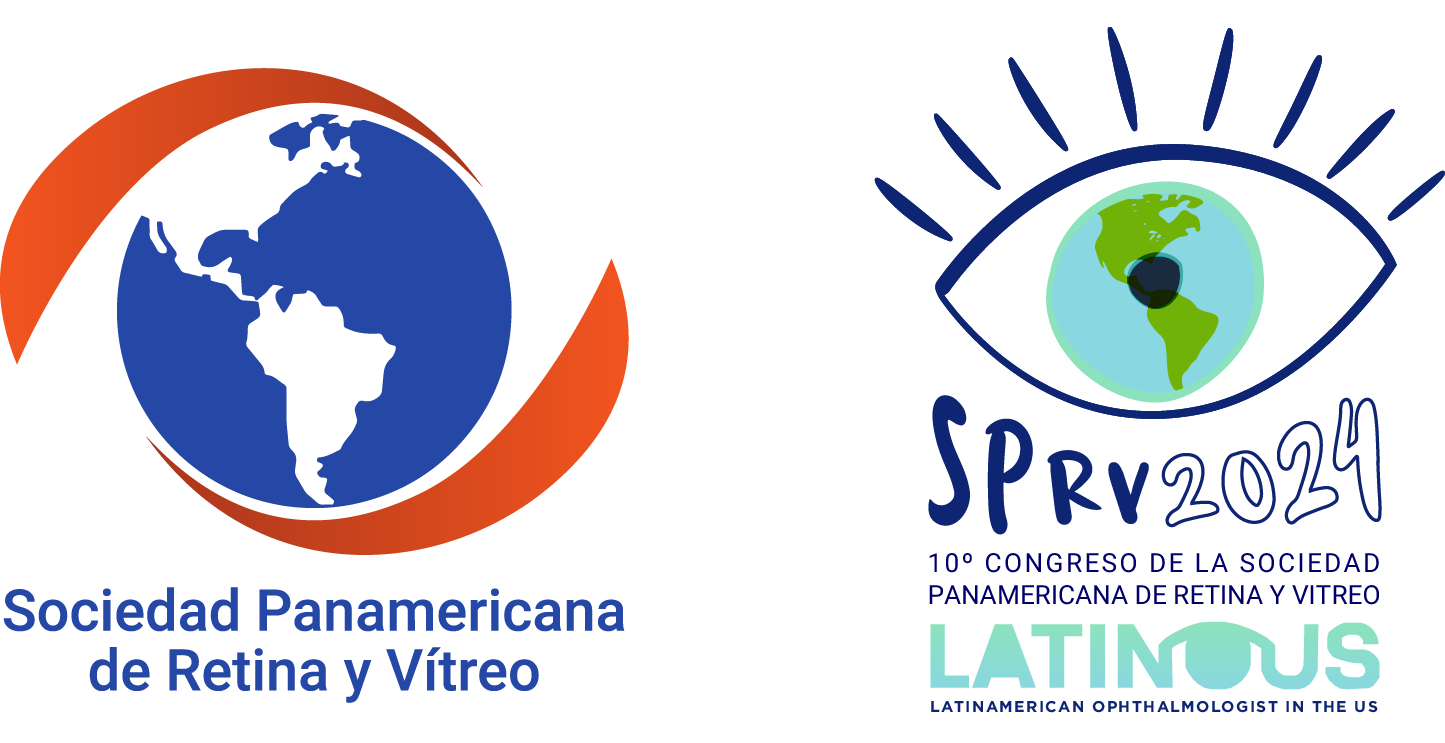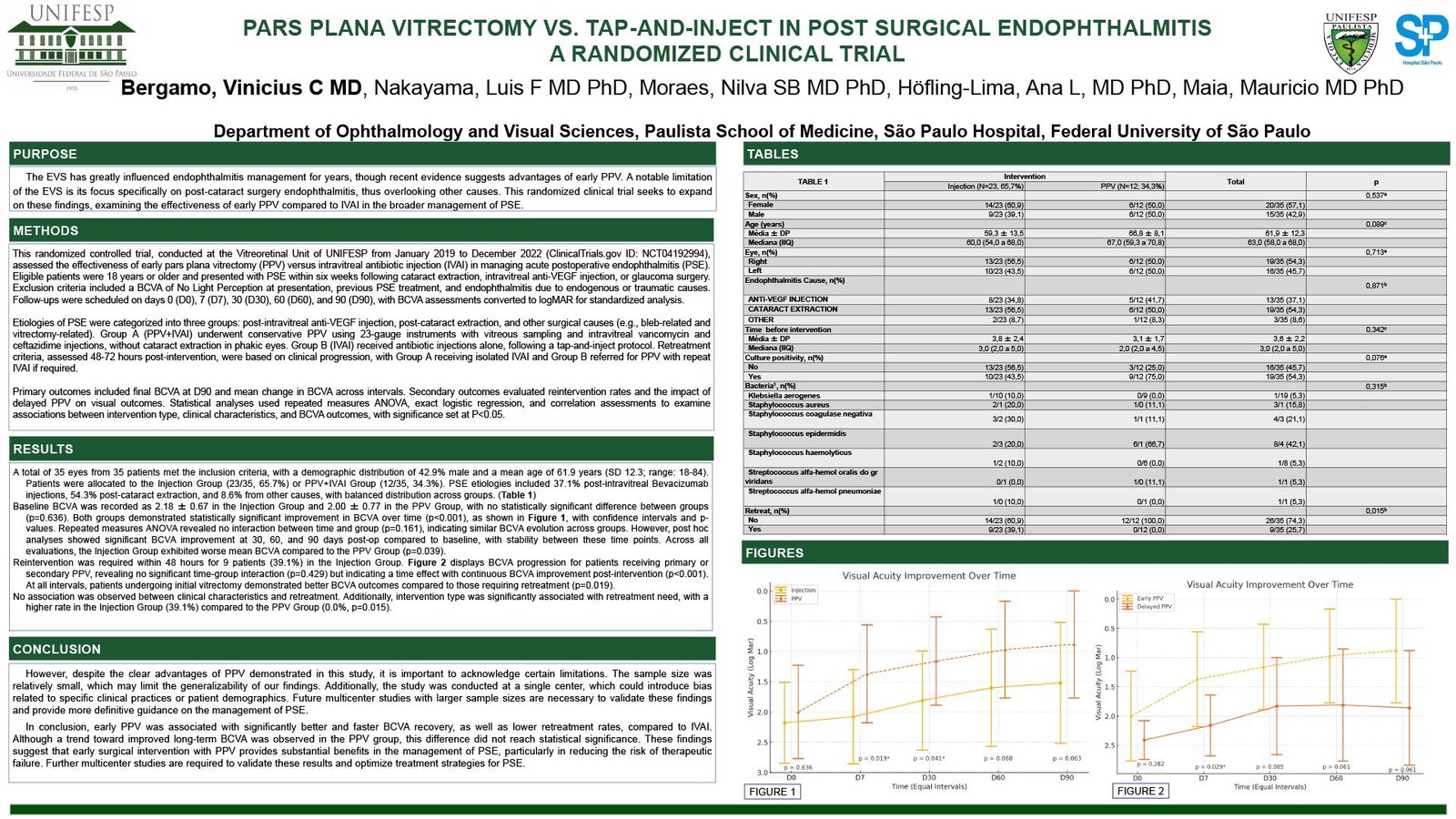SCIENTIFIC PAPER

Pars Plana Vitrectomy Vs. Tap-And-Inject In Post-Surgical Endophthalmitis A Randomized Clinical Trial
PRESENTING AUTHOR
Vinicius Campos Bergamo
-
Nakayama,Federal University Of São Paulo - UNIFESP-EPM
-
Hofling-Lima Al,Federal University Of São Paulo - UNIFESP-EPM
-
Maia M,Federal University Of São Paulo - UNIFESP-EPM
-
Moraes Nsb,Federal University Of São Paulo - UNIFESP-EPM
-
Purpose:
This study aimed to evaluate the role of pars plana vitrectomy (PPV) versus intravitreal antibiotic injection (IAVI) in the management of acute postoperative endophthalmitis (PSE), considering the limitations of the older Endophthalmitis Vitrectomy Study (EVS) and the advancements in surgical techniques.
-
Methods:
A randomized clinical trial was conducted at the Vitreoretinal Unit, UNIFESP, Brazil, from January 2019 to December 2022. Patients aged 18 or older with acute PSE post-cataract surgery, intravitreal Bevacizumab injections, or glaucoma surgery were included. Group A (PPV) underwent 23-gauge vitrectomy, while Group B (IAVI) received antibiotic injections only. Visual acuity was measured at various intervals up to 90 days post-intervention. Statistical analyses included Chi-square, ANOVA, and logistic regressions.
-
Results:
Thirty-five eyes were included (23 in Group B, 12 in Group A). Baseline characteristics showed no significant differences between groups. Both groups experienced significant visual acuity improvement over time. At day 90, Group A showed a trend towards better visual outcomes, but the differences were not statistically significant (p=0.191).
-
Conclusions:
PPV may offer better visual outcomes in PSE management compared to IAVI, though the results were not statistically significant. Further studies with larger sample sizes are necessary to confirm these findings.
The authors have no financial interests in any material discussed in this article. There are no conflicts of interest to disclose.












